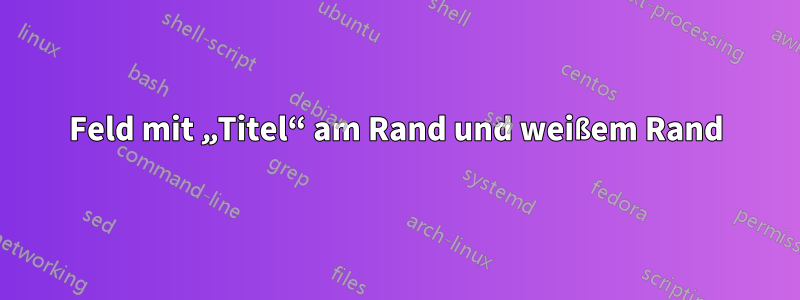
Antwort1
Sie könnten dies mithilfe der tikzBibliothek versuchen. Ich nahm an, Sie wollten eine vollständig ausgekleidete Schachtel, aber ich bin mir nicht sicher?
\documentclass[12pt]{article}
\usepackage{tikz}
\usetikzlibrary{backgrounds}
\begin{document}
\tikzstyle{background rectangle}=[thin,draw=black]
\begin{tikzpicture}[show background rectangle]
\node[align=justify, text width=\textwidth, inner sep=1em]{
Some sample text here thats in the box
};
\node[xshift=3ex, yshift=-0.7ex, overlay, fill=white, draw=white, above
right] at (current bounding box.north west) {
\textit{Push}
};
\end{tikzpicture}
\end{document}
Antwort2
Hier ist eine Version, bei der tcolorboxdas Feld gezeichnet und der Titel am Rand platziert wird.
Dies ist der Quellcode:
\documentclass{article}
\usepackage[skins]{tcolorbox}
\newtcolorbox{myframe}[2][]{%
enhanced,colback=white,colframe=black,coltitle=black,
sharp corners,boxrule=0.4pt,
fonttitle=\itshape,
attach boxed title to top left={yshift=-0.3\baselineskip-0.4pt,xshift=2mm},
boxed title style={tile,size=minimal,left=0.5mm,right=0.5mm,
colback=white,before upper=\strut},
title=#2,#1
}
\begin{document}
\begin{myframe}{Push}
Some sample text here thats in the box.
\end{myframe}
\begin{myframe}{Pop}
Some sample text. Some sample text. Some sample text. Some sample text.
Some sample text. Some sample text. Some sample text. Some sample text.
Some sample text. Some sample text. Some sample text. Some sample text.
\end{myframe}
\end{document}




